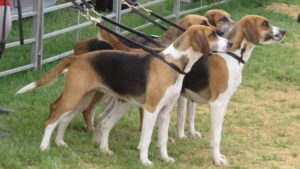
The Harrier: No Foot, No Hound
Proper foot care is essential for Harriers. From winter hazards to hot pavements and cactus spines, ensure their feet are healthy.
Home » Dog Breeds » Harrier Dog Breed
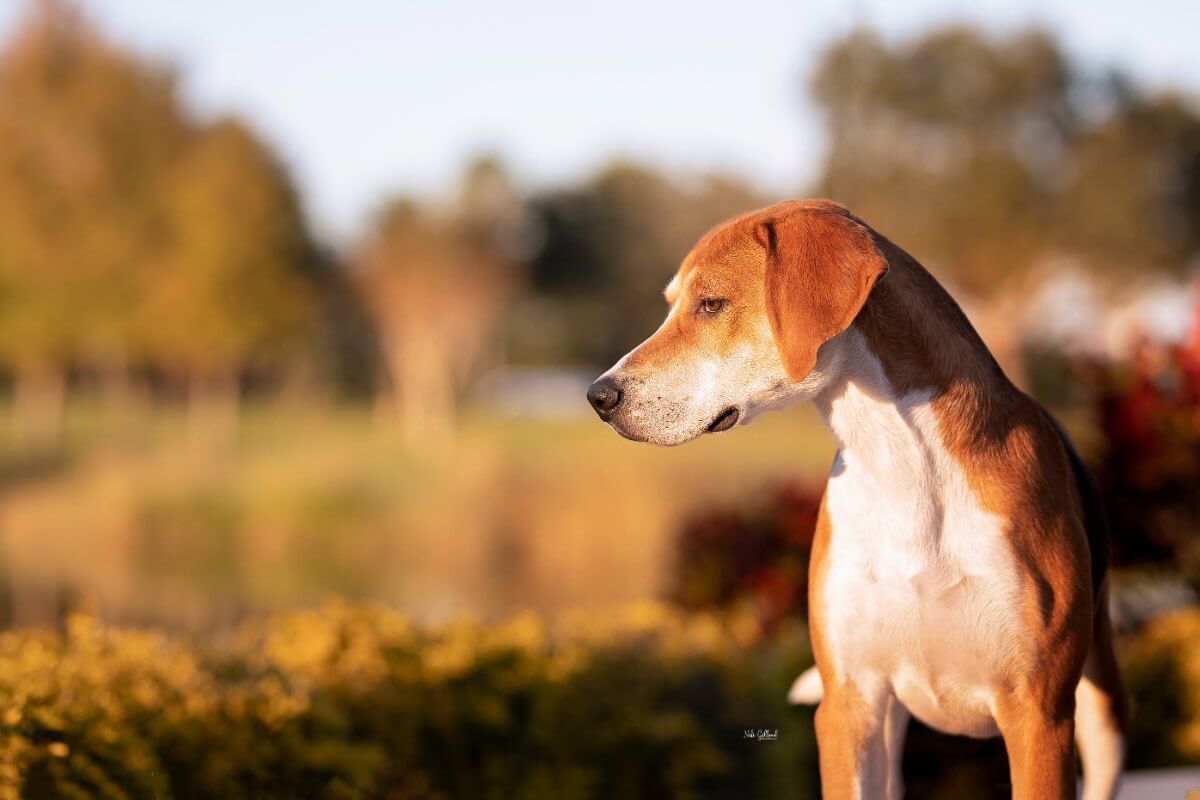
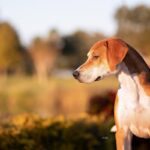
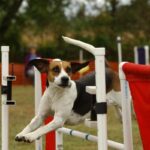

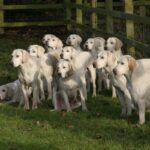
The Harrier is a medium-sized breed of hound known for its agility, endurance, and keen sense of smell. Often mistaken for a large Beagle or a small English Foxhound, Harriers have a long history as pack hunters of hares. Their cheerful and outgoing temperament makes them not only exceptional hunters but also delightful companions in the right situation.
Hound
19 – 21 Inches
45 – 60 Pounds
12 – 15 Years
| Country of Origin | England |
|---|---|
| Bred For | Hunting in Packs, Companionship |
| Known For | Friendliness, Active Nature, Playfulness |
| Popularity | Low |
| Temperament | Outgoing, Friendly, Dog-Oriented |
| Activities | Hunting, Running, Hiking, Conformation Shows, Dog Sports |
The Harrier’s roots were established in the British Isles where the breed’s history is aligned with Great Britain’s hunting traditions. Although the precise origin of the breed remains a matter of debate among canine historians, several prevailing theories exist which offer insight into the breed’s development.
One of the more widely accepted theories suggests that the Harrier descended from the ancient hounds brought to England by the Normans during the conquest in the 11th century. Those hounds, known for their stamina and keen scenting ability, were then likely crossed with native British hounds, resulting in the early ancestors of the Harrier. The name “Harrier” itself possibly derives from the Norman word “harier,” a term used to describe a hunting dog.
Throughout the Middle Ages and into the Renaissance, Harriers gained popularity as hunting dogs, particularly in the pursuit of hares – hence another possible origin for their name. They were prized for their endurance and ability to work in packs, and for their exceptional nose. Unlike the larger foxhound, the Harrier was adept at slowly and methodically chasing down the quarry, making them favored companions for hunters on foot rather than on horseback.
As hunting styles and preferences evolved through the centuries, so too did the breed’s role. By the 19th century, packs of Harriers became a common sight across the English countryside, reflecting the breed’s growing popularity and recognition.
The breed’s journey to North America is believed to have occurred during the Colonial period, with British settlers bringing their beloved hunting companions across the Atlantic. In the United States, the Harrier adapted to the terrain and continued its role as premier scenthound.
In terms of official recognition, the American Kennel Club (AKC) granted the Harrier its breed status in 1885. On the international stage, the Fédération Cynologique Internationale (FCI) gave its nod of approval in 1974. More recently, The Royal Kennel Club celebrated the breed by extending its recognition in 2020, although the Association of Masters of Harriers and Beagles (AMHB) was originally established in 1891. In fact, Harrier packs were first recognized in the UK as early as 1874.
Today, the Harrier is a living testament to centuries of breeding for excellence. From the verdant, rolling hills of England to the vast and varied landscapes of North America, this breed continues to showcase its exceptional scenting ability, enduring stamina, and unwavering dedication to its work wherever it is found.
Adult Harriers generally stand at a height that ranges between 19 and 21 inches at the withers.
In terms of weight, mature Harriers typically weigh from 45 to 65 pounds.
In terms of proportion, the Harrier exhibits an off-square build. Specifically, the breed is slightly longer from the point of shoulder to the rump than from the withers to the ground. As for substance, the breed is solidly built, exuding both strength and quality. It is characterized by having as much substance and bone as possible without coming across as heavy or coarse.
Texture: The coat of a Harrier is short and dense, providing a protective barrier against the elements and the rough terrain it often encounters during a hunt.
| Standard Color | |
|---|---|
| Black White & Tan | ee |
| Lemon & White | ee |
| Red & White | ee |
Markings: A Harrier’s markings are considered unimportant.
A Note About Color: The Harrier’s short, dense coat is glossy and hard to the touch. On the ears, the coat is finer in texture, and there’s a “ brush” of longer hairs on the underside of the tail. The color and pattern of this hound’s coat is not regarded as being very important.
The Harrier’s tail is set on high and carried vertically at a position ranging from 12 o’clock to 3 o’clock. It is strong at the base and tapers to a point, and is carried high but never curled over the back. The tail is an essential tool for the Harrier, often used for balance while hunting and as a visible flag in taller vegetation.
The Harrier, with its affable nature and hunting heritage, is a unique blend of a happy hunting hound and loyal family companion. Prospective owners of this breed should be aware that it is active and intelligent, and requires both physical and mental stimulation to remain content. The breed’s history as a pack animal means these hounds typically get along well with others and thrive in the company of other dogs, especially other Harriers. It’s important to remember, however, that owning any dog, especially one with a rich hunting heritage, comes with considerations that are specific to the breed.
The Harrier is generally a robust dog with a sturdy constitution, largely owing to its breeding for stamina and endurance during the hunt. When properly cared for and given regular check-ups, these dogs tend to have fewer health issues compared to some other breeds.
Lifespan: On average, a Harrier that receives proper care and attention has a lifespan of 12 to 15 years.
While the Harrier is typically a healthy and resilient dog, it is not immune to a few health issues. Some potential risks associated with the breed include:
Regular veterinary visits are crucial to catch and address any potential health issues early on. Annual check-ups, appropriate vaccinations, and preventative care can significantly enhance the quality and length of a Harrier’s life.
Harriers are characterized by their friendly and outgoing nature, making this hound a delightful companion for active individuals. Originating as a pack hound, the breed tends to exhibit a sociable demeanor, often getting along splendidly with both people and other animals.
For novice dog owners, a Harrier can be an excellent choice in the right home. The hound’s even-tempered nature, combined with a touch of playful energy, means these dogs bring both joy and activity to any household. That said, potential owners should be prepared for their occasional stubborn streak, which underscores the importance of consistent training and early socialization.
In terms of sensitivity, Harriers have a moderate level. They thrive best in environments where positive reinforcement is the norm, and they can be quite receptive to gentle guidance. On the flip side, they likely won’t respond well to harsh corrections or loud confrontations.
Being social creatures, Harriers don’t take well to prolonged periods of isolation. Extended durations of solitude can lead to separation anxiety, so it is beneficial for them to have regular companionship. This sociability extends to other dogs as well. With their pack-oriented mentality, Harriers usually relish the company of other canine companions.
Families with young children will find that the Harrier, with its patience and gentle demeanor, often integrate well in children’s playtime. However, as a general rule for any dog, interactions between kids and their canine companions should always be supervised.
One of the standout traits of the Harrier is its welcoming attitude towards strangers. These hounds tend to be approachable and friendly, although early socialization can play a significant role in ensuring they remain confident and not overly reserved in new situations.
Feeding a Harrier requires understanding the breed’s dietary needs, which can vary based on age, activity level, and overall health. Harriers, with their energetic nature, require a balanced and nutritious diet to fuel their daily activities and maintain optimum health.
For Harrier puppies, a high-quality puppy formula is essential to support their rapid growth and development. Puppies have different nutritional needs compared to adult dogs, requiring more protein and specific nutrients to aid in bone and muscle development. Typically, it’s recommended to feed them smaller, more frequent meals, gradually transitioning to adult food at around one year of age.
When it comes to adult Harriers, a hound’s diet should be rich in protein with the right balance of fats, carbohydrates, vitamins, and minerals. On average, an adult Harrier might consume between 1.5 to 2.5 cups of high-quality dry food daily, split into two meals. However, these amounts can vary based on the dog’s weight, age, metabolism, and activity level. It’s essential to make sure the chosen food meets the nutritional needs specific to the breed and its activity level.
It’s also worth noting that Harriers, like most dogs, can be prone to obesity if overfed or not exercised regularly. Monitoring a hound’s weight and adjusting its food intake accordingly, combined with regular veterinary check-ups, will go a long way towards maintaining a healthy weight.
Water intake is equally vital. Harriers should always have access to fresh, clean water, especially after physical activity.
Regardless of the Harrier’s age or activity level, it’s essential to avoid overfeeding and make sure the Harrier is receiving a balanced diet. Regular consultations with a veterinarian or a canine nutritionist can help to tailor the perfect diet for an individual dog, ensuring long-term health and vitality.
Harriers, with their keen senses and instinctual drive, bring a unique set of training opportunities and challenges. Originating as scenthounds, their propensity to follow their nose can often take precedence over commands, but with the right approach, these hounds can be highly trainable and obedient companions.
Training a Harrier requires consistency and care. The breed’s natural curiosity, combined with its occasional stubborn streak, usually means patience is necessary to instill commands and behaviors. However, these affable hounds are eager to please their owners and will respond best to positive reinforcement methods. Treats, praise, and toys can be effective motivators during training sessions.
One potential challenge is the breed’s tendency to vocalize, especially when the Harrier picks up on intriguing scents or notices something unusual in its environment. Early training can help to manage and reduce excessive noise-making, teaching the hound when it’s appropriate to vocalize and when it’s not.
Intelligence is one of the breed’s strong suits. Harriers can be quick learners, and with proper guidance, they can pick up on a range of commands and even tricks. However, the breed’s intelligence can sometimes translate into craftiness; Harriers might occasionally try to outsmart their owners, especially if they sense inconsistency in the training regimen.
Despite being sociable, Harriers have a noticeable potential for wanderlust. Their background as hunting hounds means they’re inclined to chase after interesting scents. Hence, it’s crucial to make sure they are in a secure environment, especially during off-leash play. Recall training, in particular, is vital for Harriers, although consistency in this regard can be a challenge for this independent breed.
In terms of predation, the Harrier’s hunting background means these hounds might show interest in smaller animals. Early socialization, especially with various animals and environments, can help to reduce their prey drive, making them more adaptable to diverse settings.
Exercise is a fundamental aspect of a Harrier’s life. These dogs are blessed with a natural zest for activity, rooted in their heritage as working hounds. Meeting their exercise needs will encourage not only their physical well-being but also their mental satisfaction.
| Energy Level | Moderate to High |
|---|---|
| Exercise Requirements | 2 Hours/Day (Minimum), Daily Walks, Vigorous Running, Regular Exercise, Playing with Another Dog, Mental Stimulation |
Harriers possess a moderate to high energy level, which means they thrive on regular activity each day. While they certainly enjoy lounging at home with their families, it’s essential to remember they have an inherent need to run, play, and explore.
The intensity of exercise can vary, but a Harrier requires more than just a casual stroll around the block. A couple of brisk walks, combined with some off-leash play in a secure area, can be ideal. Given the breed’s background in hunting and its strong scenting ability, activities that allow these hounds to use their noses can be particularly fulfilling. Games like “find the treat” or tracking exercises can be both fun and mentally stimulating for them.
Playfulness is another hallmark trait of the Harrier. These happy hounds often enjoy interactive games with their families, be it fetch, tug-of-war, or even agility exercises. These activities not only help to burn off energy, they also strengthen the bond between the hound and its human caretakers.
It’s worth noting that, given their hunting instincts, Harriers can sometimes become focused on interesting scents during outdoor activities. It’s crucial, therefore, to make sure that when off-leash, they are in a securely fenced area to prevent them from wandering off and becoming lost.
Grooming is an essential aspect of care for a Harrier, though the breed’s short coat makes this process relatively straightforward. The coat, while not demanding, still requires some attention to keep it in prime condition and to ensure the overall health of the dog.
| Coat Type | Short, Dense, Hard, Glossy |
|---|---|
| Grooming Requirements | Weekly Brushing, Occasional Bathing, Routine Ear Cleaning, Periodic Nail Trimming, Regular Tooth Brushing |
Harriers have a short, dense coat that’s designed to protect them from the elements when they’re out working in fields and forests. This coat type is relatively easy to groom. A weekly brush with a firm-bristled brush or a hound mitt will help to remove loose hairs and distribute the skin’s natural oils, giving their coat a healthy sheen.
While Harriers aren’t known to shed excessively, they do have seasonal shedding periods, primarily in the spring and fall. During these times, more frequent brushing might be necessary to manage the loose hair and guarantee the coat remains clean and the skin stays healthy.
Bathing a Harrier isn’t required often, only when the hound gets particularly dirty or starts to have a noticeable doggy odor. Using a dog-specific shampoo will preserve the natural oils in the skin and coat, preventing any potential skin issues.
In addition to coat care, other grooming essentials include regular nail trimming, cleaning the ears, and providing routine dental care. The Harrier’s nails can grow quickly, so keeping them trimmed helps to prevent overgrowth and potential cracking or splitting. The hound’s ears, being droopy in nature, can trap moisture or dirt, so a regular check and gentle cleaning can prevent infections. Tooth cleaning, often overlooked, is crucial. Regular brushing of the teeth or providing dental chews can help with maintaining good oral health and prevent many dental diseases.
Living with a Harrier is a rewarding experience, blending the joys of companionship with the vibrant energy of a working hound. However, potential owners should be aware of the breed’s specific needs and adapt their living situations to ensure a harmonious coexistence.
For those residing in apartments or homes without a backyard, it’s crucial to remember that Harriers are active dogs that require daily exercise. The breed might not be the best choice for those with very limited space. While the breed can adjust to apartment living, these hounds need consistent outdoor activity to burn off energy and satisfy their natural instincts. Having access to a nearby park or open space can make a significant difference in the quality of life for an urban or suburban Harrier.
When it comes to weather sensitivity, Harriers are relatively versatile. Their dense coat provides some protection against the cold, but it’s essential to be mindful of extreme conditions. While they can handle colder temperatures reasonably well, prolonged exposure to intense cold without adequate shelter, or during inactive periods, can be harmful. Conversely, in hot weather, it’s important to make sure they have access to shade and plenty of fresh water. Activities during peak hours of heat and humidity should be limited to prevent overheating.
Harriers are sociable dogs that thrive on human interaction. In the home, they’re known to be affectionate and can form strong bonds with family members. However, they also appreciate their downtime and will often find a cozy spot to nap after an active play session. While they aren’t typically known to be overly protective, their alert nature means they can be good watchdogs, alerting owners to unfamiliar sounds or unexpected visitors.
The arrival of Harrier puppies brings plenty of excitement to those who have been awaiting their arrival. These bundles of joy, with their adorable faces, playful antics, and boundless energy can quickly win the hearts of any dog lover. However, raising Harrier puppies requires understanding the breed’s unique needs and making sure each pup receives proper care throughout its puppyhood.
From the moment a Harrier puppy is born, it is naturally interesting in its mother and its immediate surroundings, exploring the world of the whelping box with eagerness. Early socialization is crucial as the puppy grows, so exposing it to various sights, sounds, and experiences in the few weeks of life is important. Introducing the pup to different people, pets, environments, and situations as it continues to grow can help it develop into a confident and adaptable adult.
Nutrition plays a vital role in the growth and development of every Harrier puppy. A balanced diet specifically designed for puppies will ensure the pup receives the right nutrients in the correct proportions. Regularly consulting with the breeder and a veterinarian about the puppy’s dietary needs, and adjusting portions accordingly as it grows, can be especially helpful throughout the first year of life.
While the Harrier puppy is still young, it is essential to establish a routine for its day. Regular feeding times, potty breaks, and play sessions can help to instill a sense of security and structure. Training should also start early, using positive reinforcement methods. Simple commands like “sit,” “stay,” and “come” can be introduced at a young age, laying the foundation for more advanced training later on.
The Harrier pup, with the energy of a typical scenthound, needs safe spaces to play and explore. Providing toys that cater to its teething needs and instinctual drive can keep it engaged and may help to prevent unwanted destructive behaviors. It is also crucial to provide a play area that is secure, given the breed’s desire to run and its inclination to follow scents.
Routine veterinary check-ups are crucial during the Harrier’s puppy stage. These visits can monitor a pup’s growth, ensure it is up-to-date on vaccinations, and address any potential health concerns early on.
The Harrier, with its history as a hunting hound, has an innate desire for activity and a keen sense of purpose. This drive, combined with the breed’s intelligence and energy levels, makes these hounds suitable candidates for various extracurricular activities. Engaging in these events not only provides physical exercise, it also delivers mental stimulation. Some of the dog sports that are a terrific fit for a Harrier include:
While these are just a few of the formalized dog sports in which Harriers may participate, these mid-sized hounds also relish informal play, leisurely walks, and hikes with their human and canine companions. It’s essential to recognize that whether it’s a structured event or casual play, Harriers flourish when engaged both physically and mentally.
The Harrier is recognized by the world’s leading registries and kennel organizations, which categorize the breed into a specific Group based on its unique characteristics. This breed is recognized worldwide under the following Group designations:
| Organization | Group Designation |
|---|---|
| AKC (American Kennel Club) | Hound |
| UKC (United Kennel Club) | Scenthound |
| CKC (Canadian Kennel Club) | Hounds |
| ANKC (Australian National Kennel Council) | Hounds |
| RKC (The Royal Kennel Club) | Hound |
| FCI (Fédération Cynologique Internationale) | Group 6: Scent Hounds and Related Breeds; Section 1.2: Medium Sized Scent Hounds |
The ideal Harrier is described by a Breed Standard that is approved by each of the world’s leading registries and kennel organizations. The Breed Standards for this breed may be found in the following links:
| Organization | Breed Standard |
|---|---|
| American Kennel Club | AKC Harrier Breed Standard |
| United Kennel Club | UKC Harrier Breed Standard |
| Canadian Kennel Club | CKC Harrier Breed Standard |
| Australian National Kennel Council | ANKC Harrier Breed Standard |
| The Royal Kennel Club | RKC Harrier Breed Standard |
| Fédération Cynologique Internationale | FCI Harrier Breed Standard |
Being an integral part of canine culture, especially in the realm of hunting and conformation shows, the Harrier has enjoyed support from a number of dedicated clubs. These organizations serve a multitude of purposes: from preserving the Breed Standard and the breed’s history to organizing events and providing resources for owners.
In the United States, the primary organization dedicated to the Harrier is the Harrier Club of America. Established to protect and advance the interests of the breed, the club provides a hub for enthusiasts to exchange information, participate in events, and work towards the preservation of the Harrier.
In the United Kingdom, the Harrier’s recent recognition by The Royal Kennel Club has encouraged increased interest in the breed. While a singular, national club for Harriers is in its nascent stages given the breed’s 2020 recognition, regional enthusiasts have been proactive in their efforts to consolidate resources and share knowledge and resources.
It’s important to remember the Harrier is first and foremost a pack hound. Organizers dedicated to the breed’s welfare not only provide essential resources and support for Harrier owners, they also ensure the breed’s future by emphasizing health, temperament, and the preservation of its rich history.
The commitment to the Harrier’s well-being extends beyond breed clubs into the world of rescue and adoption. Rescue groups play a pivotal role in providing second chances to hounds that have found themselves without a home, whether due to abandonment, surrender, or other unfortunate circumstances.
In the United States, Harrier Rescue takes the lead as a devoted organization concentrating on the rescue, rehabilitation, and rehoming of Harriers. Their team of committed volunteers works diligently to provide any Harrier in need with the utmost care, love, and attention, setting each hound on a path towards a loving forever home. Additionally, the Harrier Club of America, while primarily focused on promoting and preserving the breed, also supports and aids in rescue and welfare initiatives for the breed.
It’s worth noting that while breed-specific rescue groups play a crucial role in the welfare of Harriers, many other animal rescue organizations and local shelters may also have Harriers available for adoption. These establishments are equally committed to the well-being of the breed and offer another avenue for those looking to give a Harrier a loving home.
Yes, Harriers shed. Like many dogs, they go through shedding seasons, typically during the spring and fall. Regular grooming can help to manage and reduce the amount of loose hair.
Harriers are known for their vocal nature, especially when they’re on the scent of prey. While they might not bark excessively in a household setting, they can be vocal if they pick up interesting scents or if they’re bored.
Harriers are relatively rare, especially when compared to other hound breeds. Their numbers are not high in the United States or in Great Britain, and they’re considered one of the less common breeds.
Absolutely! Harriers are known for their friendly disposition and affectionate nature. They typically get along well with children and other pets, making them excellent family companions.
While Harriers primarily have a history as a pack hunting dog, their adaptable and intelligent nature means they can occasionally be trained for service roles. However, they aren’t as commonly chosen for service work as some other breeds due to their independent nature.
Like many dogs, Harriers thrive on companionship and activity. Leaving them alone for extended periods can lead to boredom, which might result in destructive behavior. It’s best to ensure they have activities or companionship when their people are away for long durations.
Harriers have moderate maintenance requirements. While their grooming needs are relatively straightforward, they do require regular exercise and mental stimulation to keep them happy and healthy.
Yes, the Harrier is an exceptional hunting dog. Historically used for hunting hare, they have a keen sense of smell and exhibit great stamina in the field. Their adaptability has also seen them used for hunting other game, showcasing their versatility as hunters in a variety of situations and terrain.

Proper foot care is essential for Harriers. From winter hazards to hot pavements and cactus spines, ensure their feet are healthy.
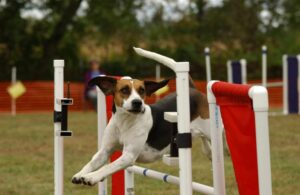
Harrier dog breed has a long history in England, with detailed records of individual packs existing from 1260 to the present.
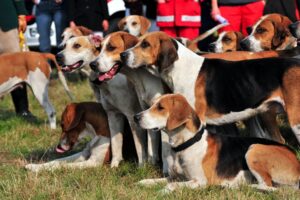
Harrier dogs are very social and people-oriented, but behind their soft eyes is a very intelligent, independent, and self-willed scenthound.
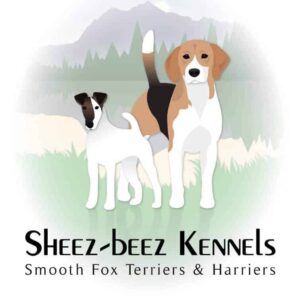
Interview with Hound Group Breeder Sheila Allen – Sheez-Beez Kennel Smooth Fox Terriers & Harriers – I currently live in Snohomish,

Proper foot care is essential for Harriers. From winter hazards to hot pavements and cactus spines, ensure their feet are healthy.

Harrier dog breed has a long history in England, with detailed records of individual packs existing from 1260 to the present.

Harrier dogs are very social and people-oriented, but behind their soft eyes is a very intelligent, independent, and self-willed scenthound.

Interview with Hound Group Breeder Sheila Allen – Sheez-Beez Kennel Smooth Fox Terriers & Harriers – I currently live in Snohomish,
The best way to ensure a long and happy relationship with a purebred dog is to purchase one from a responsible breeder. Not sure where to begin?
Contact the National Parent Club’s Breeder Referral Program, which is listed on the AKC Breeder Referral Contacts page.
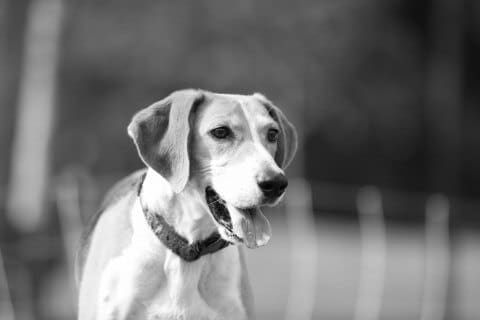

"*" indicates required fields
Showsight Magazine–the world’s most influential purebred dog publication since 1992. Each issue reaches a global audience dedicated to preserving the history and health of purpose bred dogs. Filled with award-winning editorial focused on news and insights from the dog show community, top breeders, handlers, AKC Judges, and more!